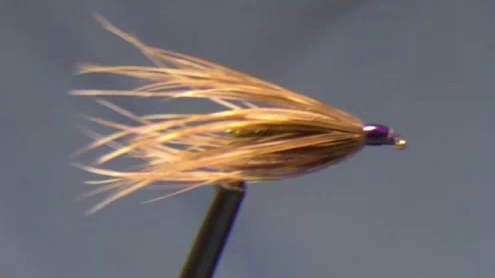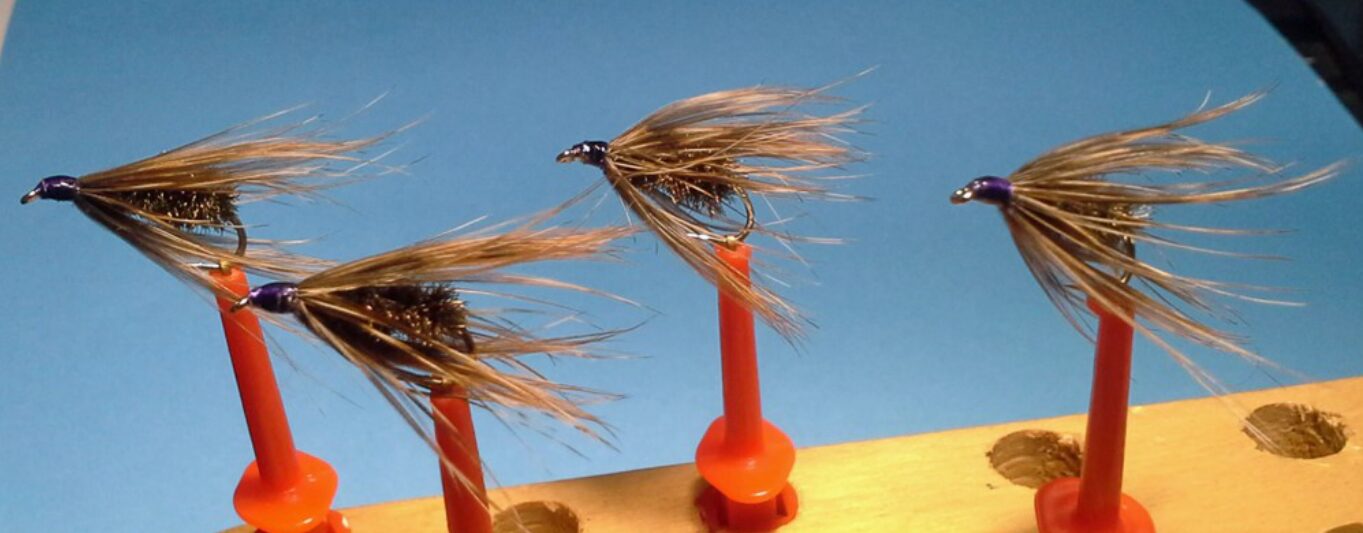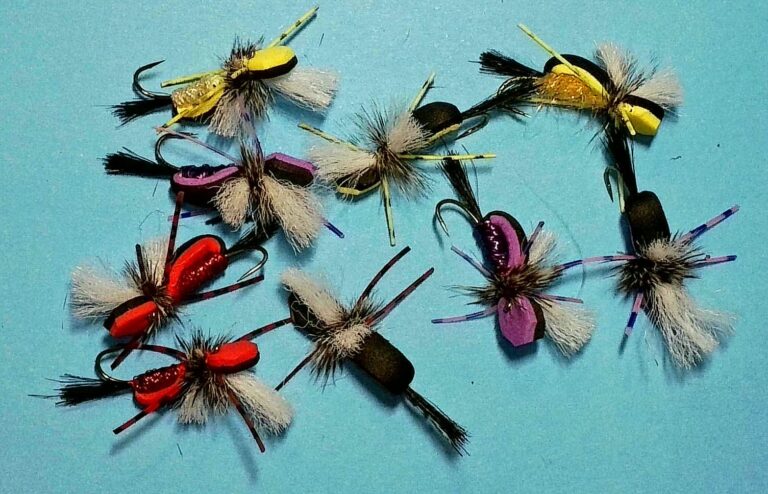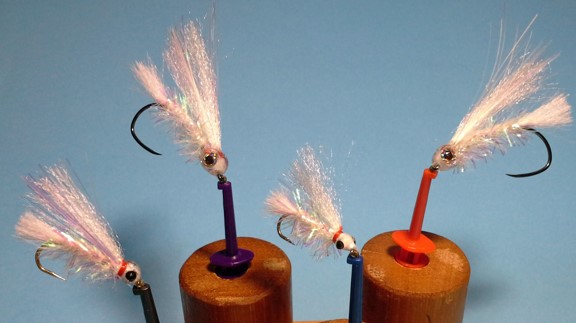The Soft Hackle Snail Variant is a remarkable fly pattern hailing from Australian Fly Patterns by Peter Coulson, tied expertly by Paul Fedeles. The soft hackle snail variant is specifically designed to imitate the natural movement of snails in the water, making it an excellent choice for fishing in lakes and still waters. The combination of peacock herl for the body and a large Malleefowl breast feather for the hackle gives the fly a subtle, lifelike appearance with soft, pulsating movements as it drifts through the water. The purple thread adds a unique visual element, enhancing its overall appeal to trout and other freshwater species.
Peter Coulson, the author behind this fly pattern, offers a valuable tip for fishing the Soft Hackle Snail Variant: it performs best when used with a “heave and leave” retrieve, interspersed with odd-meter strips. This technique mimics the slow, erratic motion of a snail, allowing the fly to sit still momentarily and then move in quick, short bursts. This unpredictable movement makes it hard for fish to resist and often triggers aggressive strikes. Perfect for targeting trout, this fly should be a staple in any angler’s lake fishing arsenal.
Materials
- Hook:2x nymph, hook size 12
- Thread:Purple 14/0
- Body:4 or 5 strands of peacock herl
- Hackle:Large Malleefowl breast feather
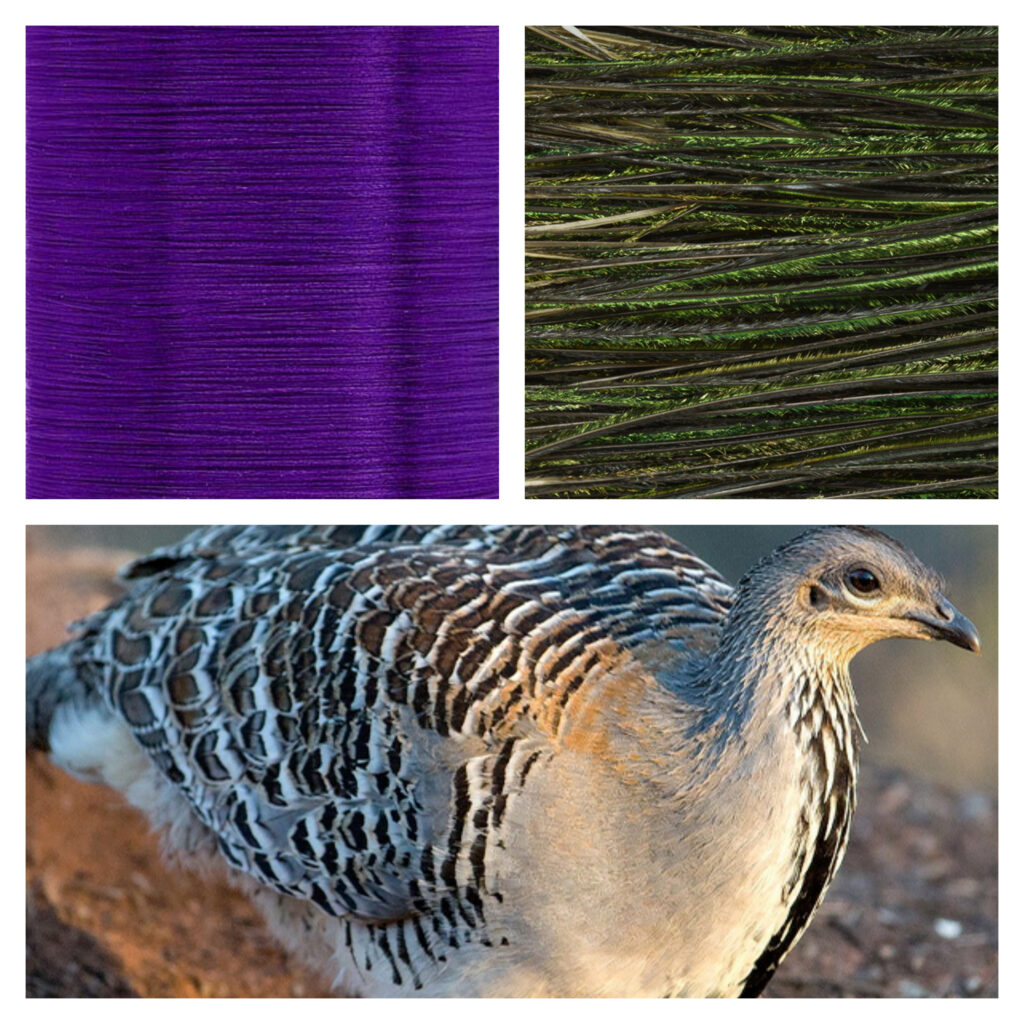
Tying Instructions

- Cover the hook with thread.
- Tie in four our five strands of peacock herl.
- Make a Nor-Vise dubbing brush or wrap the herl around the thread.
- Wrap the herl on the hook to make a chubby body.


- Leave at least two eye-lengths for the hackle.
- Prepare and tie in the large malleefowl feather.
- Make four or five wraps of the hackle, tying it off behind the eye.
- Fold the feathers back and wrap back to form a head.
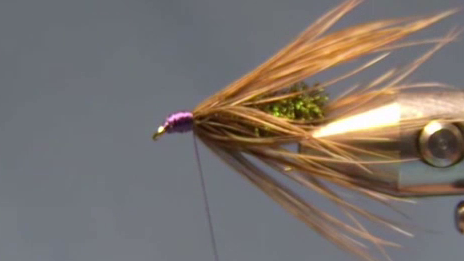
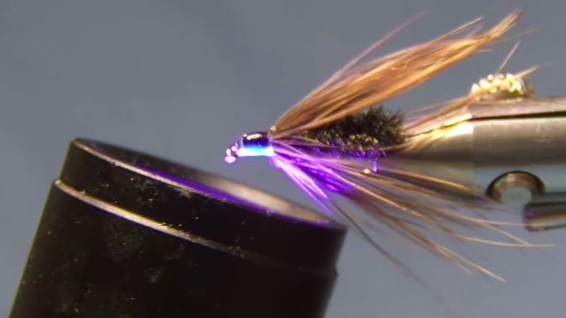
- Whip finish.
- Two drops of UV resin to finish the fly.
- Train the feathers with your hair dryer.
(Every fly tier should have one!)
